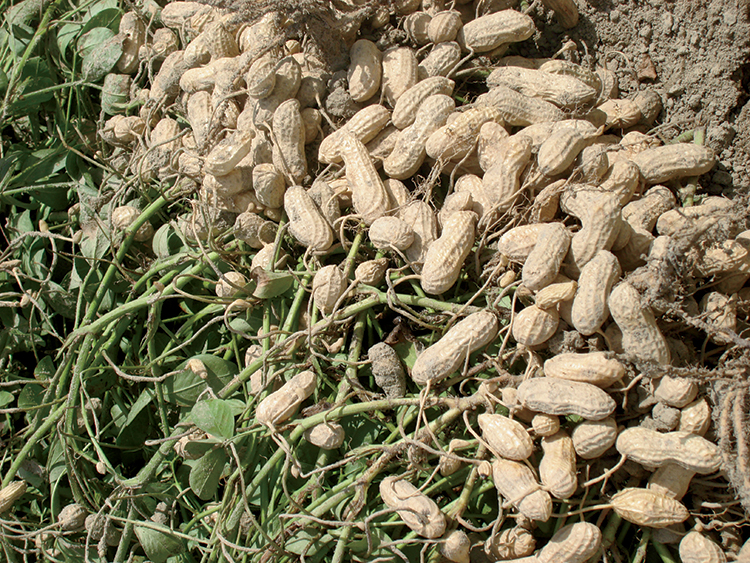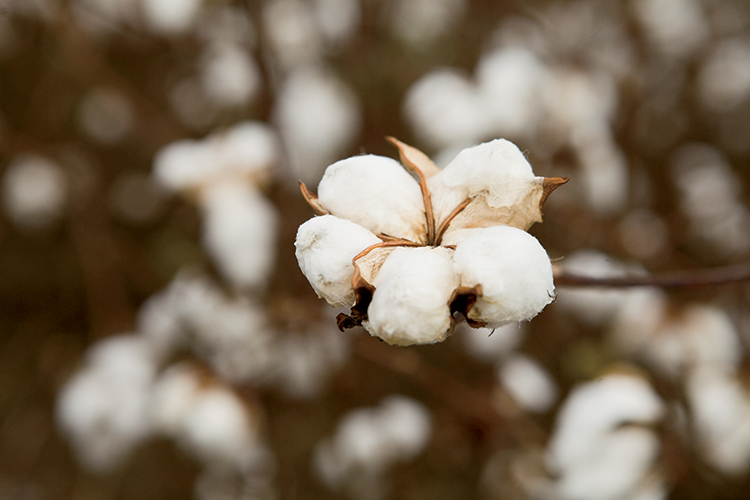Home > Virginia > Virginia Crops & Livestock > Dynamic Duo: Virginia Peanuts and Cotton
Dynamic Duo: Virginia Peanuts and Cotton
In partnership with: Virginia Department of Agriculture and Consumer Services
New advancements in technology related to peanuts and cotton are taking both crops successfully into the future. Farmers have found great agronomic success rotating the two crops for many years, but with new seed and harvest technology they are finding even greater benefits.
New Seed Varieties
Innovation in seed variety technology for peanuts and cotton helps grow stronger plants that will withstand the elements. “We choose varieties that will give us the highest yields, but over the years I have seen a difference in the amount of stress the plants can withstand,” says Clay Lowe, a cotton and peanut farmer from Wakefield, Va.
Plant stress can come from extreme weather conditions, including both drought and too much rain. “For cotton we choose some varieties that mature earlier and some that mature later, so if we don’t have ideal weather we won’t see as drastic declines in our yields.”
Technologies in seed varieties also help defend the plant against other stresses. “New disease-resistant peanut varieties mean that we don’t have to fumigate, which saves us from having to apply chemicals to the soil,” says JW Jones, a peanut and cotton farmer from Windsor. “We are always looking at new varieties that will increase yield and offer the best quality, while staying environmentally conscious.”
Seed traits not only help the farmer, but also offer great benefit to end consumers. While peanuts have always been a healthy source of important fats, high-oleic varieties will make them even healthier. The new high-oleic varieties coming down the pipeline will increase the shelf life of Virginia’s in-shell peanuts and provide consumers with significantly improved heart-healthy oil content of their snack peanuts.
Harvesting Potential
Modern harvesting technology saves farmers valuable time, labor and fuel. “With our old cotton harvesting system, it took us about four gallons of fuel to pick an acre. Now it takes us about 2.5 gallons,” says Lowe, who is also the chair of the Virginia Cotton Board. “That fuel savings makes a big difference over the course of a harvest.”
The fuel savings come from using less equipment with Lowe’s new baler picker. In the past, Lowe would have to run three pieces of equipment: a cotton picker, a tractor with a cotton boll buggy to transport cotton from the picker to the module builder and a tractor to provide power to the module builder.
Now Lowe is able to use just one piece of equipment. The new baler picker picks the cotton, makes large round bales and holds a finished bale until Lowe is ready to deposit it at the edge of the field. “I probably save about five to 10 minutes per acre with the new system, which can really start to add up over all our cotton acres,” Lowe says.
Faster harvest has many benefits. “Not only does the new picker save on fuel, but we also save time and use less labor,” Lowe says. “If mature cotton stays in the field too long, we start to lose quality, and even worse, run the risk of losing the crop to adverse weather.”
Peanut farmers also see great innovation during harvest. When peanuts are harvested they must be dried to avoid storage issues that can arise from too much moisture in the load of peanuts. In the past, farmers used small drying trailers to get peanuts to optimal moisture levels, but many farmers are moving toward large tractor-trailer dryers. New systems save time by drying more peanuts at once, while simultaneously reducing the number of farm vehicles on the road.
With these new innovations, farmers can produce these staple crops more efficiently, while delivering better products to buyers and keeping the environment safer.





